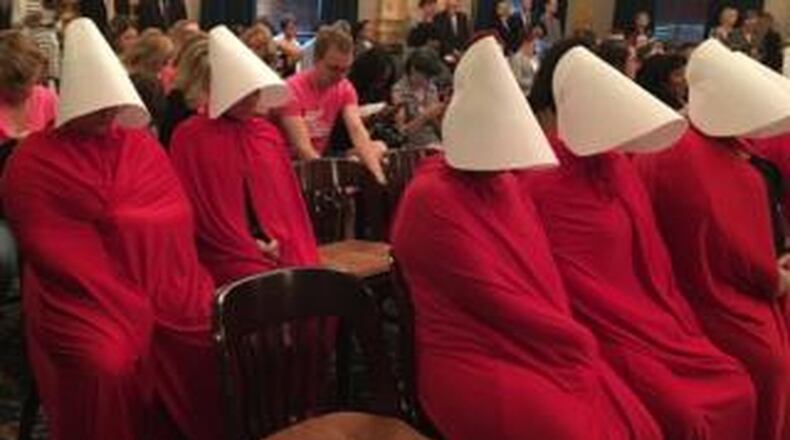The protest on Tuesday drew international media coverage.
Related: Common abortion surgical procedure under fire in Ohio
The bill would make performing a dilation and evacuation abortion a fourth degree felony. It would also open up the physician to civil lawsuits. There is an exception if the procedure is done to save the mother from death or serious risk of losing a major bodily function.
In 2015, D&E abortions were performed nearly 3,000 times in Ohio.
Backers of the bill, which include Ohio Right to Life, are calling dilation and evacuation “dismemberment abortion.”
Related: Ohio key battleground in abortion fight
Huffman said in prepared testimony: “In this operation, the technician first dilates the woman’s cervix and then uses steel instruments to dismember and extract the baby from the uterus. The baby is then ripped apart and removed from the uterus piece by piece.”
NARAL Pro-Choice Ohio Deputy Director Jaime Miracle said “It’s time to stop criminalizing women’s health care, interfering with the personal decisions of women, and substituting political agendas for the expertise of health care professionals.”
About the Author

